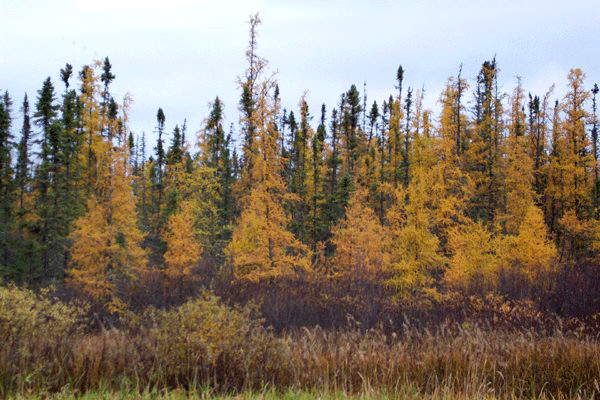| Bog Laurel, a native wetland shrub that can grow in very wet conditions. Image from HERE |
One of the questions I asked Andrea Stay regarded replanting after Emerald Ash Borer killed off mature Ash trees.
 |
| Emerald Ash Borer killed ash trees are blowing over as their roots rot. That opens up the canopy. |
I asked her to make a recommendation for a few species that proactive land owners could plant to replace the dead/dying Ash trees in their wetlands.
It is not that simple
The current recommendation by the Conservation department is that no one species should represent more than ten percent of the canopy in a given planting. That means that if you are replacing 40% of the canopy (because that is how many ash trees were there) you need a minimum of four species.
Some species of trees that might do well are likely already over-represented. Examples include Silver Maple, Box Elder and Cottonwood.
From a biodiversity and resilience standpoint, it is probably prudent to not have more than 20% of the canopy be from the same genus. That is, Silver Maple, Red Maple and Box Elder are all maple trees. You do not want 10% of all three. This becomes a challenge if you are attempting to optimize your planting for deer habitat. As tempting as it is, you probably should not plant ten different species of oak trees, for instance.
According to the Michigan flora net website, the following list of wetland tree species are native to the cluster of counties around Eaton County, Michigan and can be considered as replacements for Ash trees. Note that ubiquitous (over represented) species are not listed:
 |
| Cattails in the foreground, Larch (with golden needles) growing where it is slightly drier. Spruce trees behind them. Image from Wikipedia. |
- Shellbark Hickory
- American Larch
- Sour Gum also known as Tupelo
- Black Spruce
- American Sycamore
- Balsalm Poplar
- Swamp White Oak
- Arborvitae also known as White Cedar
| Ruffed Grouse are virtually expatriated from Eaton County due to the loss of Quaking Aspen, a pioneer species, in the habitat. Image from HERE |
- Ohio Buckeye
- Gray and Yellow Birch
- Hornbeam
- Bitternut Hickory
- Hackberry
- Honey Locust
- Quaking Aspen (Keystone species for Ruffed Grouse)
 |
| Whorled Loosestrife |
- Bog Rosemary
- Bog Birch
- Buttonbush (ubiquitous)
- Whorled Loosestrife (not to be confused with Purple Loosestrife)
- Mountain Holly
- Bog Laurel
- Swamp Fly Honeysuckle
- Labrador Tea
- Swamp Rose
- Large and Small Cranberry
the bog laurel is SO PRETTY. wonder if I could grow one in a pot?
ReplyDeleteMountain Laural is a possibility for you. One source http://www.waysidegardens.com/kalmia/c/GE_1003_174/
ReplyDeleteFollow any instructions that work for Azaleas, Rhododendrons or Blueberries.
One method that works in Georgia is to only bury half of the root ball in the soil, then mound shredded bark (nursery mulch) over the top half of the rootball. The roots get moisture from the soil and nutrients from the decaying organic matter of the shredded bark.
You might also benefit from planting the Mountain Laurel bush where it will be shaded during the hottest hours of the summer afternoon. The north side of a building or northeast side of a tree, for instance.
Good luck.
Ash trees dying and falling over? Sounds like firewood to me. Ash is the very best firewood. What's that old refrain? "Ash wood wet, and ash wood dry, a king will warm his slippers by."
ReplyDelete